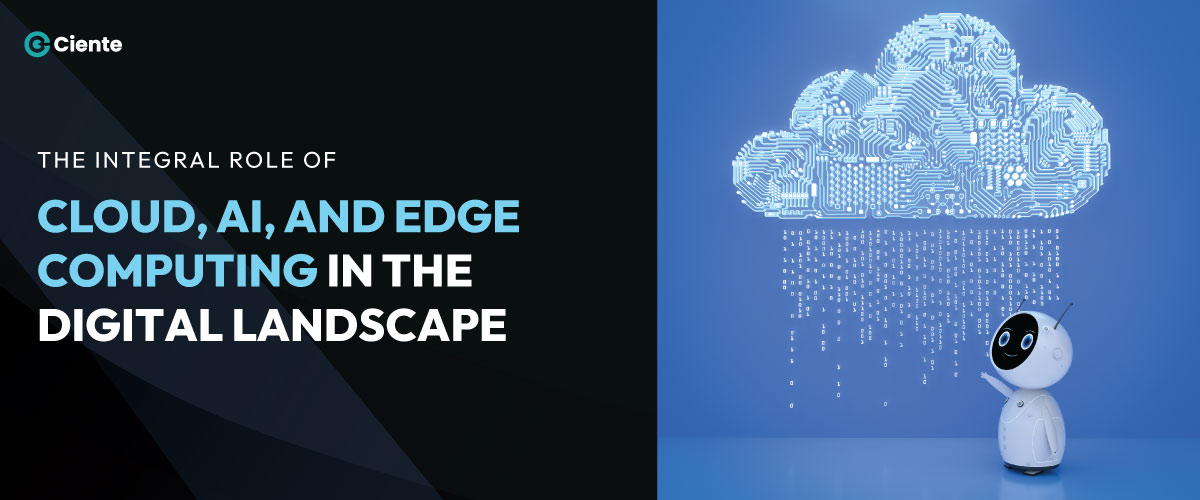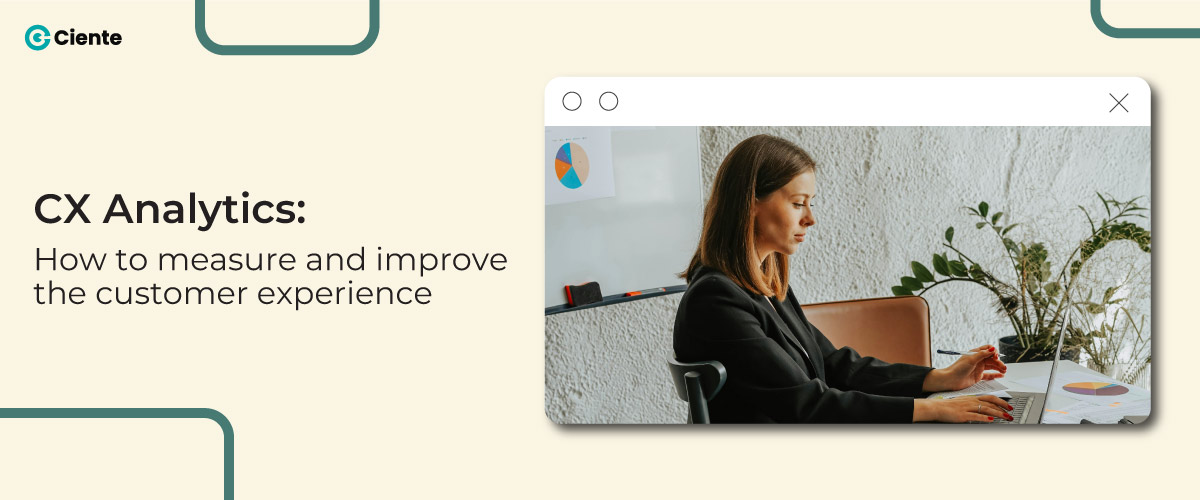The Integral Role of Cloud, AI, and Edge Computing in the Digital Landscape
AI, Cloud, and Edge computing has changed our economy. Is the future of computing ambiguous or brighter than ever?

The width and breadth of human knowledge have been ingrained in the pages of our computational systems.
Our world has changed since Turing broke the enigma and created one himself: his devices, the Turing machines. These computers worked on mechanical rules, but Turing hoped, one day, they might become like us.
Does that future seem far ahead to you? It is a relevant question today. This cyberscape of knowledge, entertainment, and organizational growth. We have leveraged our computation to educate us and survive. Though survive sounds like the wrong word, we have learned to thrive because of our computational powers.
We have collected the sum of our brains and posted them online for all to see. We create actionable data that drives business and predicts events before they happen.
Computation is the closest thing we have to magic. From simulations that mimic life with frightening detail to creating a machine with its brain, it is magical to see how far we have come.
And still, the internet and data grow in its vastness, and with AI-computing, edge, cloud, and especially quantum computing, it feels like we have barely begun to understand what computing can do for us.
Computing is the power to run complex objects for our benefit.
What is Computing?
There are various complex definitions of computing. Ranging from its days as analog machines to the transition to digital.
In essence, computing is the specific set of calculations done by a machine. These machines are Personal Computers, Smartphones, tablets, servers, ARMs and more. There is an endless list of computing machines in the modern world. In 2021 alone, there were 15 billion mobile devices. The number is projected to increase.
Computing is everywhere. From powering our nuclear plants to running a vacuum cleaner, almost everything has a digital chip that carries out instructions beneficial to us.
What are the different types of computing?
There is a vast number of computing methods available to us. Every computing method has its own use cases and wishes to push the boundaries of what is physically possible.
In this piece, we will talk about AI, Edge, and Cloud computing for the sake of business. Let us also touch on some fascinating forms: –
- Cloud Computing: The Cloud is a bunch of computers called servers that hold vast amounts of data and computational power. These machines are built on scalability or to provide power and data as needed. The servers of a cloud computing system access the internet and stream computational power where required. You can access data and computing power from anywhere, usually subscription-based. There are three types of cloud computing.
- SaaS (Software-as-a-Service): Provides software/applications remotely to individuals and businesses. Examples: SEMrush, Notion, Adobe Creative Cloud.
- PaaS (Platform-as-a-Service): PaaS provides enterprises/individuals platforms to build their applications. These usually have various services attached to them, like computing data and storage. Examples: Google Cloud, AWS Elastic Beanstalk, and Microsoft Azure.
- IaaS (Infrastructure-as-a-Service): Provides only the hardware part of the computation. In short, it provides computational power through its servers, storage, and networking capabilities.
- Edge Computing: Edge Computing is a tricky one to understand. All definitions say it is the placement of the data generator close (physical proximity) to the data processing plant. It moves data processing from cloud computers to something closer to the source. There are three terms we must understand.
- Edge Devices: Edge devices process and generate data at the edge. These can range from small devices to huge in-house servers.
- Edge Networks: The edge networks connect devices and the cloud to allow a seamless flow of information.
- Edge Applications: These applications are created to run on edge devices. They are low-latency and require minimal connectivity. Example: The software on your home lock or Bluetooth speakers in your car.
- AI Computing: AI computing is a system that learns through machine learning. It takes vast datasets to derive insights and create outputs based on user requirements. AI computing is revolutionary for its capabilities of changing how we interact with machines in general. There are also types of AI computing. They are based on the methods the AI uses to understand data. Here are some listed below: –
- Machine Learning: The most popular type of AI computing, machine learning, is feeding the AI large amounts of data sets through dynamic algorithms that help the machine learn.
- Neural Network: Neural networks are fascinating on their own. Here is IBM’s in-depth article! These networks are models that mimic our neurons’ behavior. An input is given to the nodes, which process it by weighing the options and providing an input. What makes neural networks so fascinating is the concept of the black box. We, the developers of these machines, are still unclear about how they behave.
- Deep Learning: Deep Learning is a subset of machine learning inspired by the human brain. It uses multilayered neural networks to emulate the mind and enable the machine to do various tasks simultaneously. For example: Recognizing speech and giving a response. Deep learning enables the machine to self-learn and extrapolate new data. This makes them perfect for image and speech recognition.
- Expert Systems: These are machines that simulate the behavior of domain experts. They acquire knowledge and use this knowledge where their expertise is needed. Expert systems have a rule system to tell the machine to use its expertise in specific ways. They are used as assistants, which increases efficiency. Examples: Legal AI systems and Medical AI devices.
- Genetic Algorithms: These algorithms behave on the principles of natural selection or the behavior of natural systems. These algorithms aim to cut problem-solving time by mimicking nature’s efficiency. Irrelevant problems are eliminated, and relevant ones are pushed forward. That is the basic logic of genetic algorithms.
4) Quantum Computing: Quantum computing is often hailed as the supreme evolution of computing itself. Basic computing is made up of two logical systems called 1/0. On or off, by combining and recombining these two, our computers operate and carry out calculations.
But quantum computing does away with this and uses the rules of superposition, which says that multiple states exist simultaneously at the same time until observed. Through entanglement— these states called qubits become linked and perform calculations faster than is imaginable.
5) High-Powered Computing: HPCs or high-powered computing performs complex tasks in seconds that take average PCs thousands of hours. It works on the method of parallel processing. Many processors work on the same complex problem in parallel. Example: Simulations, Drug Discovery, and AI Training require HPCs.
The list continues to grow, but when we think of computing, we generally think of these five processes.
Especially, AI, Cloud, and Edge for their vast potential for economic impact. While some welcome the change, others are apprehensive of our overreliance on these systems.
Computing has changed the course of the world. Yet, for many, the direction today seems ambiguous.
We sit at the edge of yet another revolution. Our systems are getting more efficient at what they are doing, surpassing human expertise.
Yet, many dream of a dystopian future where our technology has become a curse rather than a boon. On another spectrum, we feel technology will bring a utopia of unbound human potential.
But as with all technology, our machines may continue to change mundane aspects of life in one way while making it challenging somewhere else.
Especially for businesses, the present and future see AI, cloud, and edge computing play an integral role as they change the digital landscape. And the thing is, these three work in harmony to support each other. Edge computing improves AI, and the cloud improves both edge computing and AI performance.
Edge Computing
The edge has gained traction in the past few years. One look at Google trends, and we understand a shift in the mindsets of enterprises and SMBs alike.

What happened here? According to Hanover, from 2017, enterprises began to spend upward of $5M on AWS services alone. Now, causation might not be a correlation— we do have to factor in curiosity, but it is something to think about.
And then, there are loading and speed times. Edge computing is necessary for IoT devices. They thrive in low-latency and quick data analysis times.
Edge computing has become popular because of the increasing processing times needed for the cloud and the cost of maintaining the systems. Edge computing has increased the efficiency of factories and retail stores away from Data Centers.
One of the vital advantages edge computing offers is its scalable models. As needed, businesses can add and remove devices from their infrastructure.
Let us take an example of edge computing changing the digital and physical landscape. Think of your smartwatch— it is an edge device. It elevates the digital landscape by analyzing your metrics and providing comprehensive reports on your heart rate, your steps, and a lot more. It does all that within that tiny device, providing data in real time and at high speeds.
Gartner predicts by 2025, 75% of computing will be decentralized. That is, outside a traditional cloud infrastructure. As edge computing takes hold, there are certain security risks identified with it.
- As edge computing grows, it becomes more vulnerable by having more nodes.
- Cost and management, the saving grace of edge, can explode because of the increasing number of micro-data centers in a growing operation.
As the edge takes hold, it is necessary to understand these risks.
Cloud Computing
In 2002, Amazon introduced AWS to help developers integrate Amazon.com unique features in their web solutions. This was free of charge.

Then, in 2006, the cloud race started with the pay-to-go models of Amazonʼs EC2 that introduced the IaaS model, shaping computing history. Businesses could now rent computational power without buying the infrastructure needed for it.
Cloud computing has made scaling an organization possible. It might be its finest achievement. It does all the heavy lifting for organizations, helping them focus on boosting their productivity and saving time. Cloud has permeated everywhere. From B2B industries to horticulture, every vertical has benefitted from the creation of the cloud.
Cloud provides the building blocks for computational power. And now it sits at a pivotal juncture of its lifecycle—supporting the AI revolution and SaaS development.
Not every business is Meta or OpenAI, but every company wants to leverage the powers of AI without the high cost of maintaining an HPC. Cloud helps reduce the costs associated with AI development.
Every business has begun creating its own AI, from complex machines that store vast amounts of data to specialized tools for helping industry leaders automate their work. And this started with the rise of SaaS.
Cloud computing enables industries to create and deploy software worldwide. No extra hardware is required, just a stable internet connection. With SaaS, technologists can share their solutions through a model-based or tiered-based subscription model. SaaS models have helped businesses save time, money, and operation costs, transforming the industry forever.
Shareable, scalable, flexible, and secure— cloud computing will remain a vital computing power for the future.
AI Computing
Artificial Intelligence is the next revolutionary tech. Today, AI models are helping us make sense of our data. It understands the data by analyzing it with repetition. And observing the patterns that may not be otherwise apparent.

Since the dawn of computation, we have tried creating a machine that will mimic us. And in the past few years, that possibility has seemed likelier than ever. AI computing is automation.
Automating physical and mental tasks that otherwise would be considered mundane has become the job of our AI systems. Now, AI goes as far as to detect cancer in its early stages.
The future of AI makes computation more than calculations. It transforms computation into the creation of new. Whether creating videos through creative prompts or finding data insights for monetization, AI has begun doing all tasks mechanically possible and some more.
AI has disrupted the world at large. AI computing poses countless advantages but two risks (actually a lot, but with two, we can present a distilled view).
- It has the potential to create accurate depictions of false events (Videos, images, audio)
- We perceive it to be a threat to our status quo.
Today, AI makes automation of tasks a breeze, but tomorrow, will they do the work of a CEO?
Computing with AI presents us with new opportunities. An infinite canvas with which we can do potentially infinite things. With regulations and compliance, it can be a tool as powerful as humans harnessing fire.
Cloud, Edge, and AI computing affect the digital landscape and transform our physical world.
Computation takes center stage in our modern world. We help it run our electric grids, power systems, and the internet. Even our stock market is electronic.
Our world is a web of interconnected computation. And to make it work, we have created virtual machines and data centers to manage it all for us. The question ‘Where will it take us? ʼ has many answers. From the space race and creative marketing to improving our healthcare systems.
Computation will end up changing the digital landscape and our physical world.







